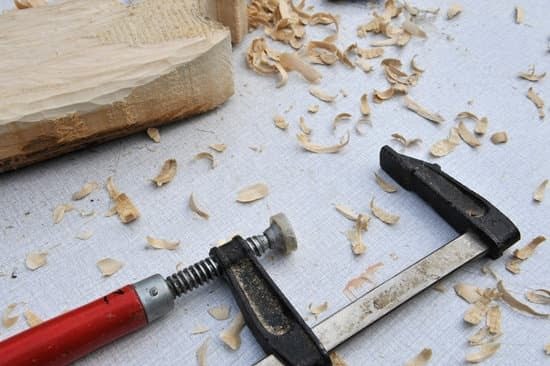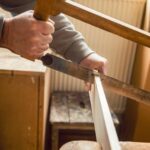Are you constantly asking yourself, “How do I train cats not to scratch woodwork?” This can be a frustrating issue for many cat owners. However, understanding the natural behavior of cats and their scratching tendencies is an important first step in addressing this problem.
Cats have a natural instinct to scratch in order to sharpen their claws, mark their territory, and stretch their muscles. It’s essential for cat owners to recognize that scratching is a normal and necessary behavior for felines. By understanding why cats scratch, you can effectively address this behavior without causing stress or harm to your pet.
In the following sections, we will delve into the reasons behind why cats scratch woodwork and discuss various methods and strategies for training them not to engage in this destructive behavior. With the right approach and a bit of patience, it is possible to redirect your cat’s scratching tendencies towards more appropriate surfaces while maintaining a harmonious relationship with your feline companion.
Identifying the Reasons Why Cats Scratch Woodwork
Cats are natural scratchers, and it is important for cat owners to understand the reasons why their feline friends engage in this behavior. By understanding the underlying motivations for scratching, cat owners can effectively address this issue and train their cats not to scratch woodwork.
Instinctual Behavior
Scratching is a natural instinct for cats, as it helps them stretch their muscles, sharpen their claws, and mark their territory. In the wild, cats use scratching to remove the dead outer layer of their claws and to leave visual and olfactory marks to communicate with other cats.
Anxiety or Stress
In some cases, cats may scratch woodwork as a way of relieving anxiety or stress. Changes in the environment, such as moving to a new home or the presence of unfamiliar pets or people, can trigger this behavior. It is important for cat owners to identify any sources of stress that may be causing their cat to scratch inappropriately.
Boredom or Lack of Stimulation
Cats also scratch out of boredom or a lack of mental and physical stimulation. Providing appropriate toys and engaging activities for cats can help redirect their energy away from woodwork and onto more suitable surfaces.
By recognizing these reasons for scratching, cat owners can take proactive steps to address them and train their cats not to scratch woodwork. Understanding the motives behind this behavior is crucial in implementing effective training strategies and finding suitable alternatives for scratching.
Providing Appropriate Scratching Posts and Surfaces for Cats
Cats have a natural instinct to scratch as a way of marking their territory, stretching their muscles, and keeping their claws healthy. It is important for pet owners to provide appropriate scratching posts and surfaces for cats to fulfill this natural behavior.
Understanding the Natural Behavior of Cats and Scratching
Before addressing the issue of cats scratching woodwork, it is essential to understand why they do it in the first place. Cats have scent glands in their paws, so when they scratch, they are not only sharpening their claws but also leaving behind pheromones to mark their territory. This behavior is instinctual for them and cannot simply be eliminated.
Identifying the Reasons Why Cats Scratch Woodwork
When cats scratch inappropriate objects like woodwork, it could be due to various reasons such as stress, boredom, or the lack of suitable scratching posts and surfaces. It is important to identify the specific reasons why your cat is scratching the woodwork in order to address the issue effectively.
Providing Appropriate Scratching Posts and Surfaces for Cats
One effective way to prevent cats from scratching woodwork is by providing them with suitable alternatives such as scratching posts, pads, and cardboard boxes. These should be sturdy, tall enough for full body stretches, and placed strategically in areas where your cat spends most of its time. By meeting their natural need to scratch with appropriate options, you can redirect their behavior away from damaging woodwork.
Using Positive Reinforcement and Rewards to Train Cats Not to Scratch Woodwork
Training your cat not to scratch woodwork can be a challenging task, but with the right approach, it is certainly achievable. Positive reinforcement and rewards are powerful tools that can help in redirecting your cat’s scratching behavior. Here are some effective strategies for using positive reinforcement to train your cat not to scratch woodwork:
1. Reward Good Behavior: Whenever you catch your cat using the scratching post or any appropriate surface, make sure to praise and reward them immediately. This can be in the form of treats, verbal praise, or petting. By associating this behavior with positive experiences, your cat will be more likely to repeat it.
2. Clicker Training: Clicker training is a popular method for shaping desired behaviors in cats. Start by introducing the clicker as a signal for when your cat does something good (e.g. using the scratching post). Pair the click with a treat to reinforce the behavior.
3. Interactive Playtime: Engaging your cat in interactive play sessions with toys such as feather wands or laser pointers can help in redirecting their energy and focus away from scratching woodwork. After each play session, offer a treat as a reward for their participation.
Consistency is key when implementing positive reinforcement techniques. It’s important to remember that every cat is different and may respond differently to various methods. Be patient and persistent in your efforts, and always prioritize positive reinforcement over punishment when training your cat.
Remember that training cats not to scratch woodwork takes time and effort, but with consistency and patience, you can successfully modify their behavior.
Establishing a Consistent Discipline for Cats When They Scratch Inappropriately
When it comes to disciplining your cat for scratching inappropriately, it is important to understand that punishment and aggression will not yield positive results. Instead, focus on redirecting their behavior and providing an alternative. Here are some strategies to help you establish consistent discipline for your feline friend:
1. Provide appropriate alternatives: Ensure that your cat has access to appropriate scratching posts and surfaces. Place these posts near the areas where they tend to scratch inappropriately. Encourage them to use these posts by using toys or treats as incentives.
2. Use positive reinforcement: Whenever you catch your cat using the scratching post instead of the woodwork, praise them and give them a treat. Positive reinforcement will help them associate the scratching post with a reward, making them more likely to use it in the future.
3. Redirect their behavior: If you catch your cat scratching the woodwork, gently but firmly redirect their attention towards the scratching post. You can do this by using a toy or a treat to lure them away from the inappropriate surface.
Remember that consistency is key when it comes to disciplining your cat’s scratching behavior. Be patient and persistent in redirecting their behavior towards appropriate scratching surfaces.
Implementing Deterrents to Prevent Cats From Scratching Woodwork
As part of your efforts to train your cats not to scratch woodwork, implementing deterrents can be an effective strategy. There are several options for deterrents that can help discourage cats from scratching surfaces they shouldn’t. One common method is to use double-sided sticky tape on the areas of woodwork that your cats tend to scratch. Most cats dislike the sticky feeling on their paws and will avoid those areas as a result.
Another effective deterrent is using citrus-scented sprays or natural citrus oils on the woodwork. Cats typically do not like the smell of citrus, so they are likely to steer clear of any surfaces that have been treated with these scents.
It’s important to note that while deterrents can be helpful in preventing unwanted scratching behavior, they should be used in conjunction with positive reinforcement and appropriate scratching posts. It’s also crucial to avoid using harsh punishment or physical force when training your cats, as this can lead to fear or aggression, and ultimately undermine your training efforts.
| Deterrent Method | Effectiveness |
|---|---|
| Double-Sided Sticky Tape | Highly Effective |
| Citrus-Scented Sprays or Oils | Effective for Some Cats |
Seeking Professional Help or Consulting a Veterinarian for Persistent Scratching Behavior
Cats scratching woodwork is a common issue for many pet owners, but understanding the reasons behind this behavior can help in effectively addressing and correcting it. In some cases, cats scratch as a way to mark their territory, stretch their bodies, or even as a form of entertainment. It is essential to recognize that scratching is a normal behavior for cats and plays a vital role in maintaining their physical and emotional well-being.
Providing appropriate scratching posts and surfaces for cats is essential in redirecting their natural scratching instincts away from woodwork. Cats prefer different textures like sisal, cardboard, carpet, or wood, so offering a variety of options can help ensure that they find something they enjoy using.
Positive reinforcement and rewards can also be effective tools in training cats not to scratch woodwork. Whenever your cat uses the designated scratching post or surface, praise them and offer treats or toys as rewards. This will positively reinforce the desired behavior and encourage them to continue using the appropriate surfaces for scratching.
It’s important to remember that training cats not to scratch woodwork requires patience and consistency. Avoid punishing or scolding your cat when they scratch inappropriately as this may cause stress or fear. Instead, use gentle scratch-furniture-or-jump” target=”_blank” rel=”follow noopener”>discipline by making a sharp noise like clapping your hands or using a verbal cue to interrupt the behavior without frightening the cat. With time and dedication, you can successfully train your cat to avoid scratching woodwork while promoting their natural need to scratch.
| Scratching Behavior | Training Method |
|---|---|
| Natural behavior of cats | Understanding reasons behind their scratching |
| Deterrents | Implementing deterrents to prevent inappropriate scratching |
Emphasizing the Importance of Patience and Consistency in Training Cats Not to Scratch Woodwork
In conclusion, training cats not to scratch woodwork can be a challenging task, but it is definitely possible with the right approach. Understanding the natural behavior of cats and the reasons behind their scratching tendencies is crucial in addressing this issue. By providing appropriate scratching posts and surfaces for your feline companion, you can redirect their scratching behavior away from your woodwork.
Using positive reinforcement and rewards, along with consistent discipline, can also help in training your cat to avoid scratching inappropriate surfaces. Additionally, implementing deterrents such as double-sided tape or citrus scents can aid in preventing cats from damaging your woodwork. However, if the problem persists despite your efforts, seeking professional help or consulting a veterinarian may be necessary to address any underlying issues.
Ultimately, patience and consistency are key when it comes to training cats not to scratch woodwork. It is essential to remain patient and understanding throughout the process, as changing a cat’s behavior takes time and persistence. With dedication and the proper techniques, you can successfully train your beloved feline friend to keep their claws away from your furniture and woodwork.
Frequently Asked Questions
How Do I Stop My Cat From Scratching My Woodwork?
To stop your cat from scratching your woodwork, provide alternative scratching surfaces like a scratching post or pad. You can also use deterrent sprays or double-sided tape on the wood to discourage scratching.
How Do I Stop My Cat From Clawing My Trim?
If your cat is clawing at your trim, try placing double-sided tape on the areas they frequently target or using deterrent sprays. Providing a variety of scratching posts can also redirect their behavior away from the trim.
How Do You Protect Wood Trim From Cat Scratches?
Protecting wood trim from cat scratches can be done by covering it with plastic or vinyl covers, or using nail caps for your cat’s claws. Additionally, keeping your cat’s nails trimmed and providing them with appropriate scratching surfaces will help minimize damage to the wood trim.

Hi everyone! I’m a woodworker and blogger, and this is my woodworking blog. In my blog, I share tips and tricks for woodworkers of all skill levels, as well as project ideas that you can try yourself.





